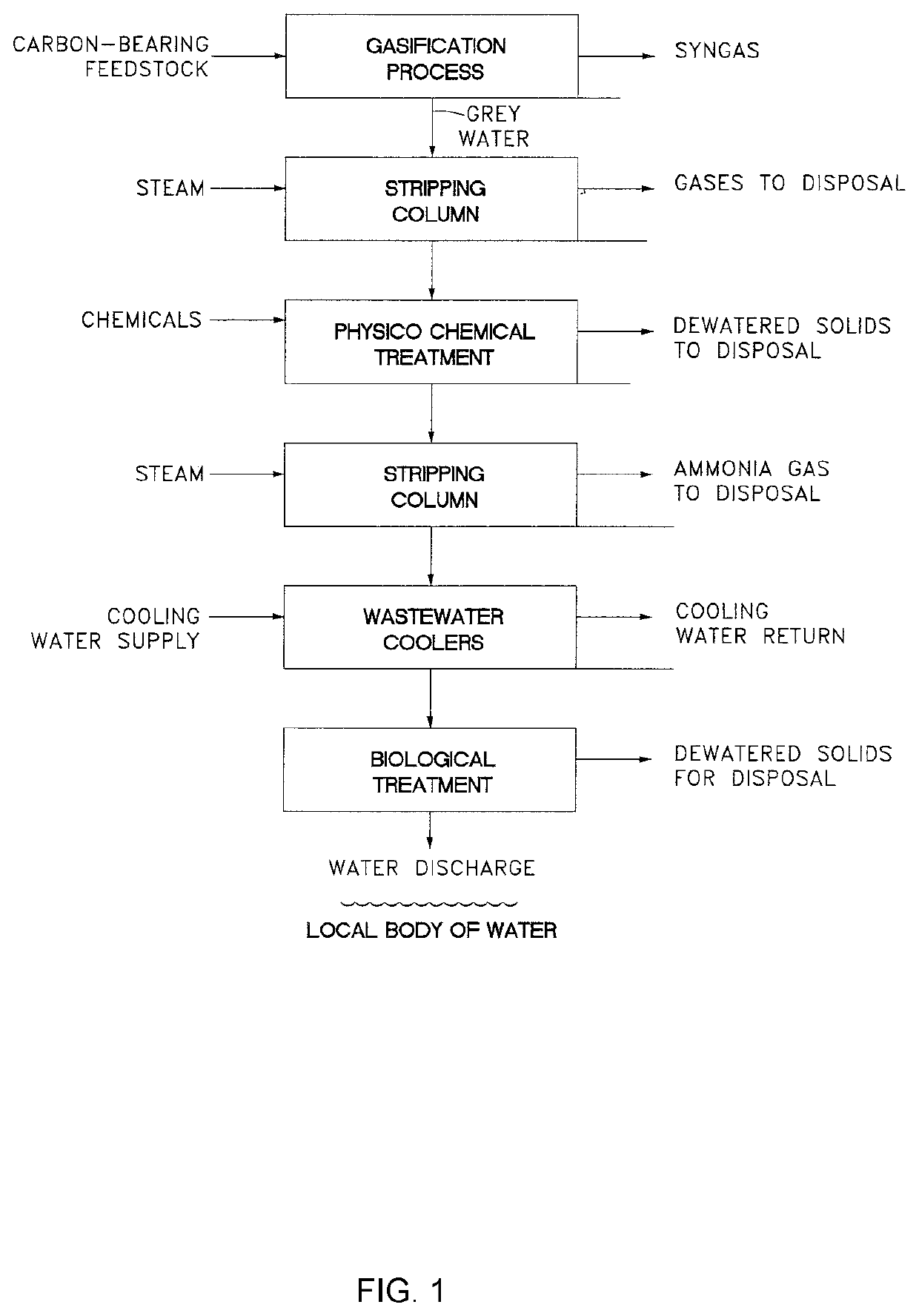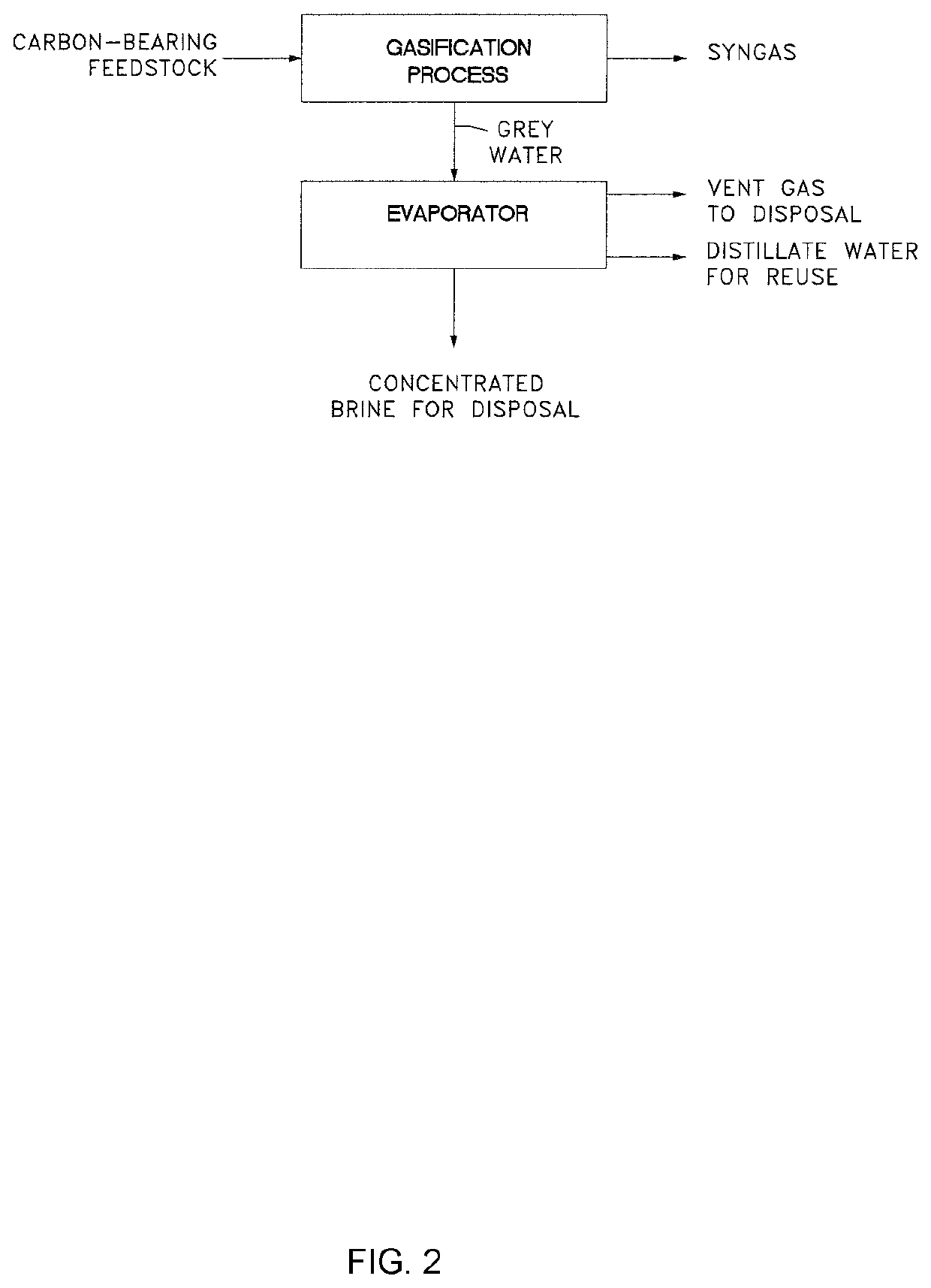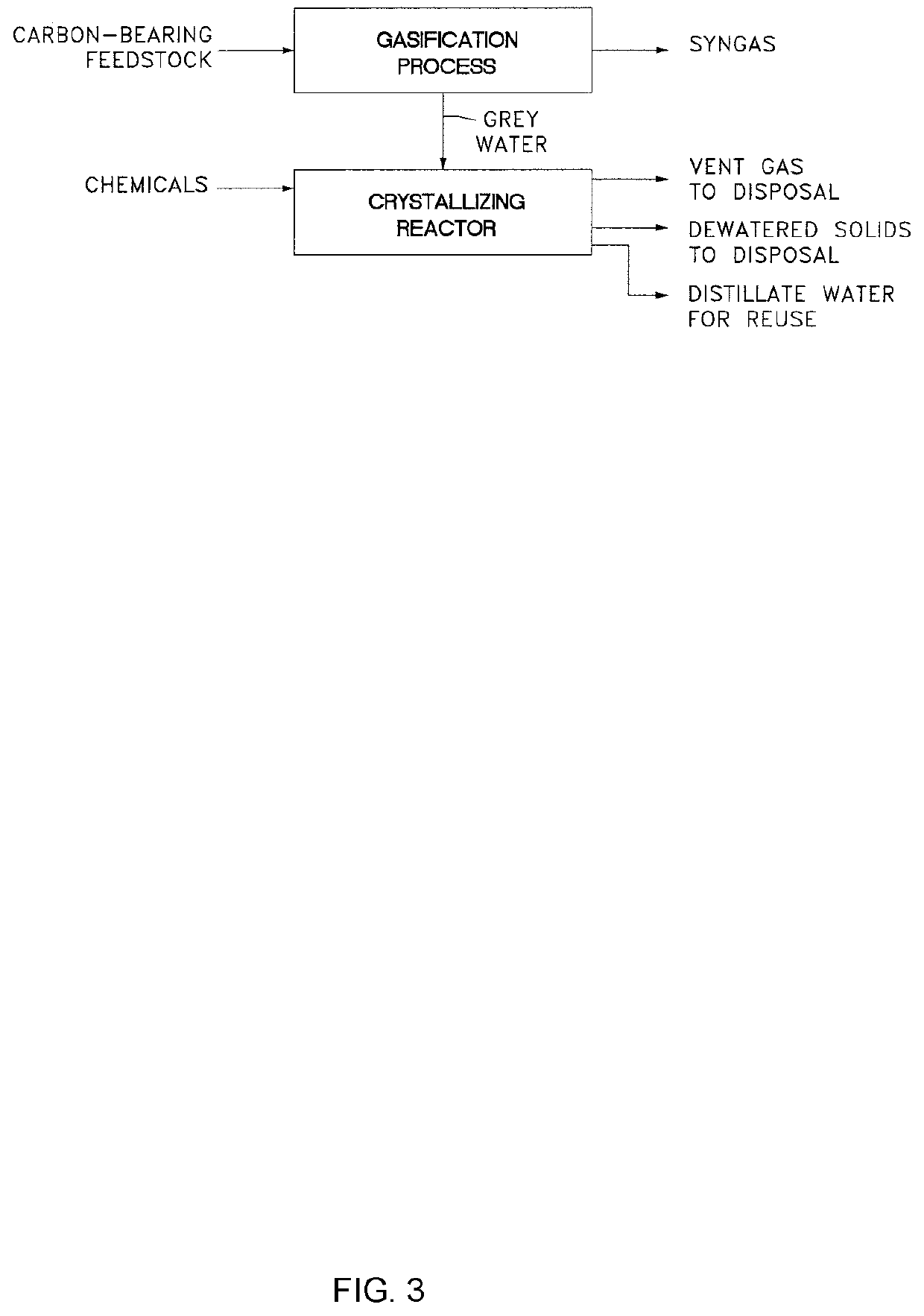Method and Apparatus for Gasification Wastewater Treatment
a wastewater treatment and gasification technology, applied in the nature of treatment water, multi-stage water/sewage treatment, separation process, etc., can solve the problems of complex wastewater, difficult integration and successful operation, complex process very quickly, etc., and achieve the effect of reducing the solubility of dissolved solids
- Summary
- Abstract
- Description
- Claims
- Application Information
AI Technical Summary
Benefits of technology
Problems solved by technology
Method used
Image
Examples
examples
[0065]Consider a gasification system which has a requirement for zero liquid discharge. The gasifier is fed with petroleum coke and operates in conditions such that a grey water is formed which is primarily composed of formates and chlorides. In this example, the representative grey water stream composition is shown in Table 1. The grey water is partially recycled back to the gasification process as it can be used to off-set the amount of make-up water. However, the recycle stream is limited based on the accumulation of chlorides allowable. Based on this limitation, a grey water stream is discharged on a continuous basis at a flow rate of 100 gallons per minute.
TABLE 1Aluminum20ppmAmmonium2590ppmArsenic100ppbBicarbonate60ppmCalcium60ppmChloride1200ppmChromium1ppmCopper200ppbCyanide1ppmFormic Acid5200ppmHydrogen Sulfide3ppmMagnesium12ppmManganese1ppmMercury5ppbNickel50ppmPotassium15ppmSilica90ppmSodium32ppmSulfate240ppmVanadium4ppmZinc6ppmCODPresentBODPresentTDS9450ppmTSS0.05%w / wpH7....
PUM
| Property | Measurement | Unit |
|---|---|---|
| Fraction | aaaaa | aaaaa |
| Concentration | aaaaa | aaaaa |
| Solubility (mass) | aaaaa | aaaaa |
Abstract
Description
Claims
Application Information
 Login to View More
Login to View More - R&D
- Intellectual Property
- Life Sciences
- Materials
- Tech Scout
- Unparalleled Data Quality
- Higher Quality Content
- 60% Fewer Hallucinations
Browse by: Latest US Patents, China's latest patents, Technical Efficacy Thesaurus, Application Domain, Technology Topic, Popular Technical Reports.
© 2025 PatSnap. All rights reserved.Legal|Privacy policy|Modern Slavery Act Transparency Statement|Sitemap|About US| Contact US: help@patsnap.com



